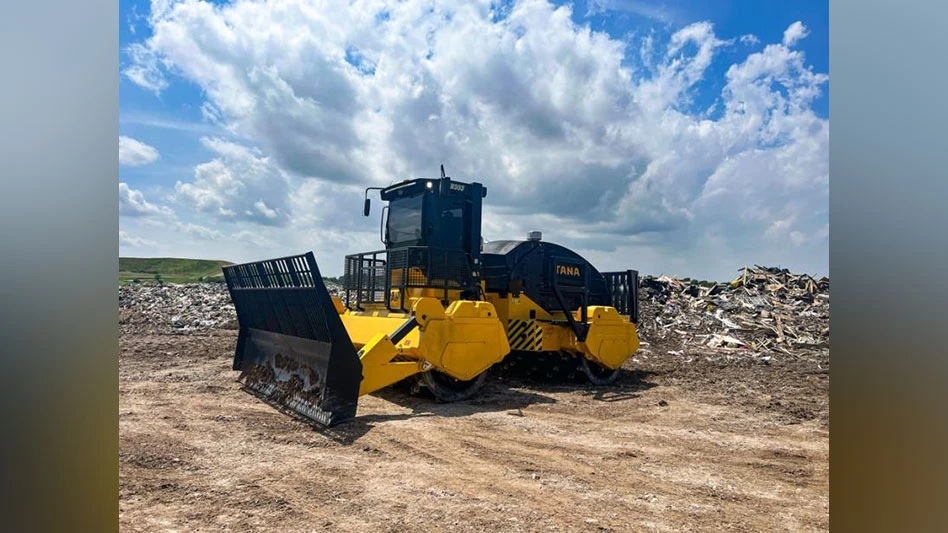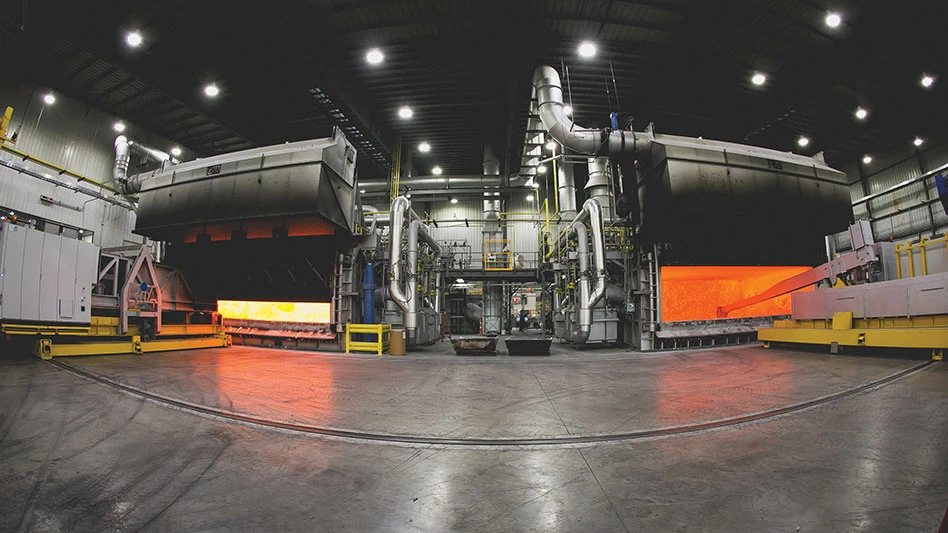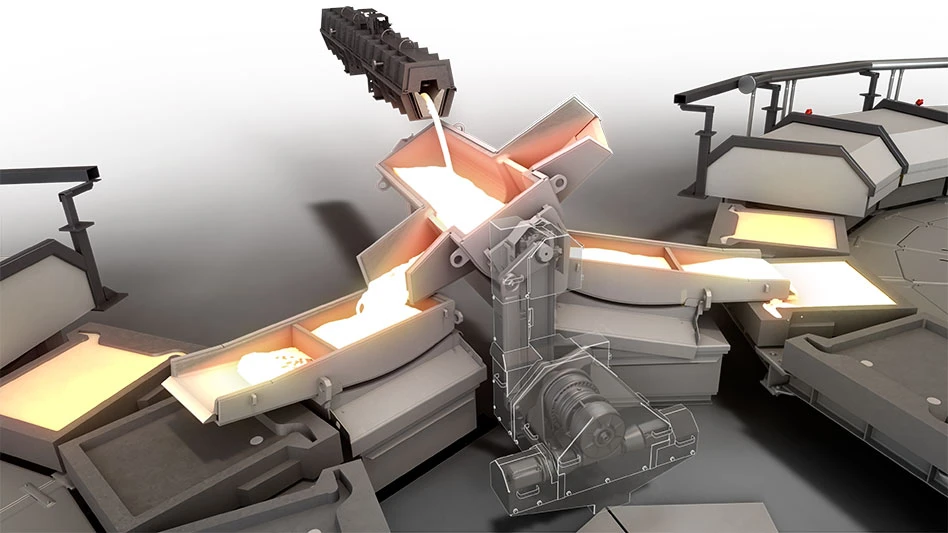
Wear your seat belt. Get an annual physical. Add to that good advice: Keep the plates in place on your shredder.
Most shredder manufacturers engineer their equipment to minimize the potential for injury. Unfortunately, human error can override even the best engineered system. However, it’s not just catastrophic accidents that cause trouble for recycling companies and the people they employ. Simply using improper posture when positioning an 80-pound screen can create problems.
“Frequent safety training of the personnel working near or with the shredders is very important,” says Andreas Schwarz, president of Lindner America LLC, Raleigh, North Carolina. “This training should include the proper operation and procedures but also the risks associated with handling the material that is being processed.”
The most common problem with safety is that operator positions tend to have high turnover, and new operators often are trained by other operators and not by factory technicians, Schwarz says. “This tends to dilute the knowledge level; hence, important information is lost.”
Terri Ward of SSI Shredding Systems Inc., Wilsonville, Oregon, says operator maintenance training is completed during equipment commissioning and startup. “Specific training regarding the safety features is explicitly carried out and includes lockout training to identify and secure all forms of energy and retained energy,” she says. “A comprehensive operation and maintenance manual addresses safety throughout the life of the shredder.”
Lack of space around the machine and poorly trained staff are common issues with shredder operations, says Dale Walker, technical engineer with Weima America Inc., Fort Mill, South Carolina.
Other representatives of shredder manufacturers, such as Mike LaGoe, director of project management for Vecoplan LLC, Archdale, North Carolina, say common sense among operators is not a given. “You would assume it is observed, but it’s not always,” he says.
As an example, LaGoe says an operator should never try to clear a jam without the machine properly locked out.
Another no-no, he says, is locating a shredder so personnel are above its hopper. For instance, LaGoe says, companies may want to put a shredder in front of a loading dock. However, he warns, “This would allow for the possibility of someone walking by to fall in.”
Avoiding noncatastrophic dangers
While first thoughts of industrial accidents might turn to serious injuries, minor injuries also create insurance claims and days off of work.
Requiring operators to wear steel-toed boots is a good basic rule. If an unprotected operator drops a knife holder onto his foot, this slip could cause severe damage.
“Wearing proper protection gear to prevent cuts and eye injury is important,” Schwarz says.
Depending on the material stream, respiration protection also might be needed.
Cut hands and broken knuckles can occur while performing basic maintenance. When removing cutters, operators often turn the wrench in the direction of the rotor. When the bolt breaks free, the worker’s hand connects with the adjacent cutter.
“Safety starts with selecting the right shredding technology for the material or application and then properly maintaining the equipment,” Ward says. Low-speed, high-torque shredders often are safer than higher speed models given their generation of less friction, dust and heat. These factors, she says, “combine to reduce the opportunity for sparking, fire, explosion or material flying out of a hopper.”
Schwarz says ergonomics can promote a safer environment. Lindner has a maintenance door that can be hydraulically opened. This allows the operator to stand right in front of the rotor to change knives.
Care also must be taken when changing screens, he says. “Lindner engineered a screen cradle that is lowered hydraulically so that the operator can pull the heavy screens out of the machine at hip level,” Schwarz says. “The patented screen system we have only requires the operator to tighten two screws per screen right in front of the operator. There is no need to crawl under the shredder to remove screens.”
Maintenance and screen doors on Lindner shredders are electrically interlocked so they cannot be opened while the rotor is turning or under power.
Vecoplan’s dual-shaft shredders have a maintenance control box on each side of the shredder. The box operates the rotor on its respective side. “This gives the operator line of sight so they can be sure that there is no one near the rotor when they turn it,” LaGoe says. “It will also only work when the door on the other side is closed and the pressure lock is engaged.”
This ensures no one is in the machine on the other side that an operator would be unable to see.
Manufacturers also recommend regular visits by factory technicians. Schwarz suggests an annual visit—not only to help keep the machines in good shape but also to ensure proper maintenance and safety procedures are in place.
“Every safety and operating training is based on the specific characteristics of the material being shredded,” Walker says.
Engineered safety
Manufacturers use multiple safety devices and practices to ensure the safe operation of their shredders. Henry Gilliland, an electrical engineer with Vecoplan LLC, points to the company’s radio-frequency identification- (RFID-) keyed door switches on the shredder rotor maintenance doors, which are designed to prevent tampering and unsafe operation.
“On our V-Eco shredders we have designed a safety Category 3/PLd safety control system,” Gilliland says. This control system uses a programmable safety relay to implement a cross monitored, dual-channel, redundant circuit.
“Our goal is to reach the highest level of functional safety possible while still remaining an economical option for our customers,” he adds.
LaGoe says Velcoplan’s hoppers have a minimum height of 40 inches to prevent fall-in. Access doors have limit switches to stop the machine if it is opened.
Wiema’s systems have an inspection flap/screen basket that can be opened only by pressing two buttons simultaneously. That assures that hands are not on or inside the machine. The same concept applies to the manual rotor control.
The company’s shredders include two security brackets to secure the open inspection flap/screen basket to prevent accidental closing, and the ram is secured during maintenance to prevent movement. Emergency switch-offs are located at the machine and control cabinet.
When performing maintenance, lockout/tagout (LOTO) always should be adhered to, manufacturers say. A common safety error is trying to clean out a rotor when the machine is not locked out.

Weima shredders feature a main electrical switch. “With it you are able to switch off all components instantly,” says Walker.
“We recommend the standard and most up-to-date, code-compliant procedures be used with our equipment,” Gilliland says. “All of our controls panels are capable of being locked out using standard LOTO pad locks,” he adds.
During the commissioning of Vecoplan equipment, each customer is walked through the proper LOTO procedure for the machine, Gilliland says.
“No maintenance or cleaning should be done on the equipment until the machine has been properly locked out and tagged out,” he emphasizes.
“The best thing that an operator can do for safety is having and following an approved lockout/tagout procedure,” LaGoe says. “Employee training is key.”
On Vecoplan equipment, the control panel has a main breaker that powers the starters. “This breaker should be placed in the off position, and all personnel doing work on the shredder should have locks with their names on them on the breaker or in a gang box that has the key to the breaker lock,” LaGoe advises.
What happens downstream of the shredder also should be considered from a safety standpoint.
“I believe the most common mistake fuel processors make is focusing too much on the perceived safety hazards associated with shredding and not enough on what happens with material as it travels through downstream equipment and eventually into storage bunkers or stockpiles,” SSI’s Ward says. “A small piece of residual metal can create a spark in a secondary shredder that joins a large stockpile of engineered fuel that sits and smolders overnight.”
She adds, “Fire detection and suppression shouldn’t be left to shredder suppliers alone. A comprehensive, facilitywide system that covers the entire processing line and storage area is a wise investment to protect both personnel and property.”
While maintenance and cleaning is important for the life of the equipment and productivity, more importantly, an accident can not only ruin a worker’s day, it can negatively affect an entire operation.
Get curated news on YOUR industry.
Enter your email to receive our newsletters.

Explore the August 2016 Issue
Check out more from this issue and find your next story to read.
Latest from Recycling Today
- Fenix Parts acquires Assured Auto Parts
- PTR appoints new VP of independent hauler sales
- Updated: Grede to close Alabama foundry
- Leadpoint VP of recycling retires
- Study looks at potential impact of chemical recycling on global plastic pollution
- Foreign Pollution Fee Act addresses unfair trade practices of nonmarket economies
- GFL opens new MRF in Edmonton, Alberta
- MTM Critical Metals secures supply agreement with Dynamic Lifecycle Innovations





